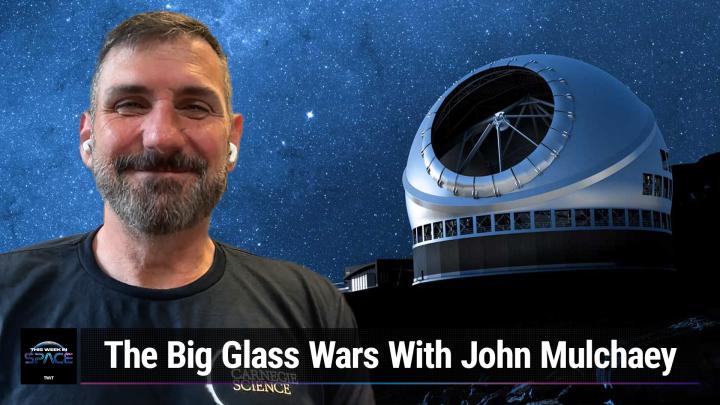Astronomical Arms Race
AI-created, human-edited.
In the latest episode of This Week in Space, hosts Rod Pyle and Tariq Malik explore the complex world of the "Big Glass Wars" - the competition to construct the next generation of large ground-based telescopes. Their guest, Dr. John Mulchaey, Director of the Carnegie Observatories, provides valuable insights into the challenges and opportunities faced by the teams behind these ambitious projects.
The two main contenders in this competition are the Giant Magellan Telescope (GMT) and the Thirty Meter Telescope (TMT). These instruments will be significantly larger than the biggest telescopes in operation today, with the GMT having a diameter of 25.4 meters (83 feet) and the TMT spanning 30 meters (98 feet). For comparison, the Hubble Space Telescope's mirror is only 2.4 meters (7.8 feet) in diameter.
The need for such large telescopes stems from the desire to study the most distant objects in the observable universe, potentially uncovering the secrets of the early cosmos and identifying Earth-like exoplanets that could support life. The size and segmented mirror design of the GMT and TMT will provide unprecedented light-gathering power and resolution, enabling new discoveries that are not possible with current telescopes.
However, the construction of these telescopes comes with significant costs. The GMT is estimated to require around $2.5 billion, while the TMT's budget is approximately $3.9 billion. Despite securing substantial private funding, both projects need investments from the National Science Foundation (NSF) and the U.S. government to be completed. Dr. Mulchaey points out that the NSF has proposed only partial funding, which may not be sufficient to bring both telescopes to fruition.
The competition to build these telescopes is not just about scientific achievement; it also has implications for the United States' position as a leader in astronomy research. Dr. Mulchaey cautions that if the U.S. doesn't invest in both the GMT and TMT, it may lose ground to competing projects like the European Extremely Large Telescope (E-ELT) and potential Chinese telescopes. Delaying funding decisions is causing the estimated costs to increase, putting the projects at risk.
Dr. Mulchaey also emphasizes the importance of investing in these giant telescopes for inspiring future generations of scientists, engineers, and innovators. Much like the Apollo missions sparked interest in science and technology, the GMT and TMT have the potential to capture the imagination of young people and drive future advancements in various fields.
As the competition continues, the teams behind the GMT and TMT remain committed to realizing their goals. The future of astronomy and our understanding of the universe will be shaped by the outcome of this endeavor. The U.S. must decide whether to rise to the challenge and secure its place at the forefront of this new era of cosmic exploration.
Become a subscriber and never miss an episode: This Week in Space
